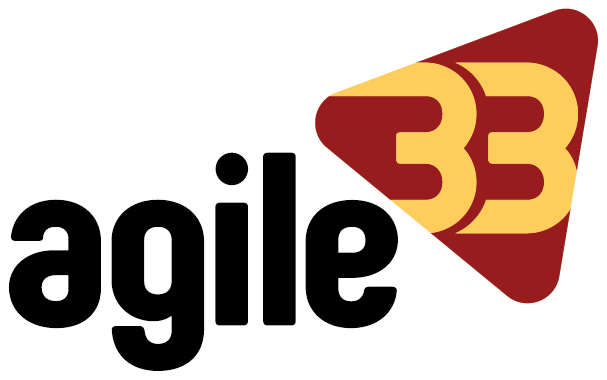
Project management methodologies continue to evolve, adapting to the complex demands of modern businesses. Among the popular approaches, Scrumban has emerged as a flexible, pragmatic framework that combines the best of Scrum and Kanban. Originally designed to help teams transition from Scrum to Kanban, Scrumban has proven to be more than just a bridge—it’s a robust methodology in its own right.
So, what makes Scrumban stand out? Let’s dive into its advantages and how it can enhance your team’s productivity, efficiency, and adaptability.
What Is Scrumban?
Scrumban is a hybrid project management framework that blends Scrum’s structured, time-boxed approach with Kanban’s visual workflow management. It retains key elements from both methodologies, offering the discipline of Scrum (like regular reviews and retrospectives) alongside Kanban’s continuous flow and focus on limiting work in progress (WIP).
This combination makes Scrumban ideal for teams seeking flexibility without losing the structure needed to maintain focus and productivity.
The Key Advantages of Scrumban
1. Flexibility Without Losing Structure
One of Scrumban’s biggest strengths is its ability to adapt. While Scrum follows strict sprints and roles, and Kanban is entirely flow-based, Scrumban sits comfortably in the middle. Teams can adjust processes based on project requirements without being confined to rigid frameworks.
· Why It Matters: Projects rarely follow a linear path. Scrumban allows teams to respond quickly to changes without sacrificing organization or clarity.
2. Improved Workflow Visualization
Scrumban uses Kanban boards to visualize tasks, making it easy to track progress at a glance. This transparency helps identify bottlenecks, manage workloads, and improve team collaboration.
· Why It Matters: When everyone can see the workflow, it promotes accountability, reduces miscommunication, and enhances productivity.
3. Continuous Improvement Through Iterations
While Kanban doesn’t inherently use sprints, Scrumban incorporates Scrum’s iterative approach with regular reviews and retrospectives. This promotes continuous improvement as teams reflect on what’s working and what needs adjustment.
· Why It Matters: Regular reflection encourages growth, process optimization, and the ability to fine-tune workflows over time.
4. No Hard Deadlines—Just Continuous Delivery
Scrumban shifts the focus from meeting sprint deadlines to delivering work continuously as capacity allows. This reduces the pressure of arbitrary deadlines while still maintaining productivity through effective work-in-progress limits.
· Why It Matters: Teams can focus on delivering quality work without the burnout that often comes with sprint cycles.
5. Better Handling of Unpredictable Work
Unlike Scrum, which is best suited for well-defined projects, Scrumban excels in environments with unpredictable workloads. Teams can easily accommodate sudden priority shifts, urgent tasks, or changes in project direction.
· Why It Matters: In dynamic industries where priorities change rapidly, Scrumban provides the flexibility needed to pivot without derailing progress.
6. Reduced Planning Overhead
Scrum requires extensive sprint planning sessions, which can be time-consuming. Scrumban minimizes this by focusing on just-in-time planning—teams plan when needed rather than following a strict schedule.
· Why It Matters: Less time spent on planning means more time spent on actual work, improving efficiency without sacrificing alignment.
7. Data-Driven Decision Making
With the visual nature of Kanban and the structured reviews from Scrum, Scrumban provides a wealth of performance data. Metrics like cycle time, lead time, and throughput help teams make informed decisions about workflow improvements.
· Why It Matters: Data-driven insights enable continuous process optimization, leading to better project outcomes over time.
8. Ideal for Evolving Teams
Whether you’re transitioning from Scrum to Kanban, scaling Agile practices, or managing cross-functional teams, Scrumban adapts to your team’s growth. It’s not a “one-size-fits-all” model—it evolves with your team’s needs.
· Why It Matters: Teams aren’t static, and Scrumban’s adaptability ensures that your project management approach grows alongside your organization.
When Should You Use Scrumban?
Scrumban isn’t the perfect fit for every team, but it excels in certain environments:
· Teams with Unpredictable Workloads: Ideal for support teams, operations, or projects where priorities shift frequently.
· Organizations Transitioning Between Frameworks: Perfect for teams moving from Scrum to Kanban or vice versa.
· Projects Requiring Continuous Delivery: Great for environments where delivering incremental updates is more valuable than fixed sprint goals.
· Teams Seeking Process Flexibility: If your team struggles with the rigidity of Scrum but finds Kanban too open-ended, Scrumban offers a balanced middle ground.
Potential Challenges to Consider
While Scrumban offers many advantages, it’s not without challenges:
· Lack of Defined Roles: Unlike Scrum, Scrumban doesn’t prescribe specific roles, which can create ambiguity if not clearly defined by the team.
· Risk of Scope Creep: Continuous delivery can lead to ongoing changes if boundaries aren’t set, making strong backlog management essential.
· Requires Discipline: Flexibility doesn’t mean a lack of structure. Teams need to maintain discipline with WIP limits and regular reviews to avoid falling into chaos.
Scrumban offers the best of both Scrum and Kanban, providing structure where it’s needed and flexibility where it’s most valuable. It’s an adaptive framework designed for real-world projects—where change is constant, priorities shift, and teams need room to grow.
Whether you’re managing product development, IT operations, or business processes, Scrumban can help your team deliver more effectively, adapt quickly, and continuously improve. The key is not just in adopting the framework but in understanding how to tailor it to fit your team’s unique needs.
